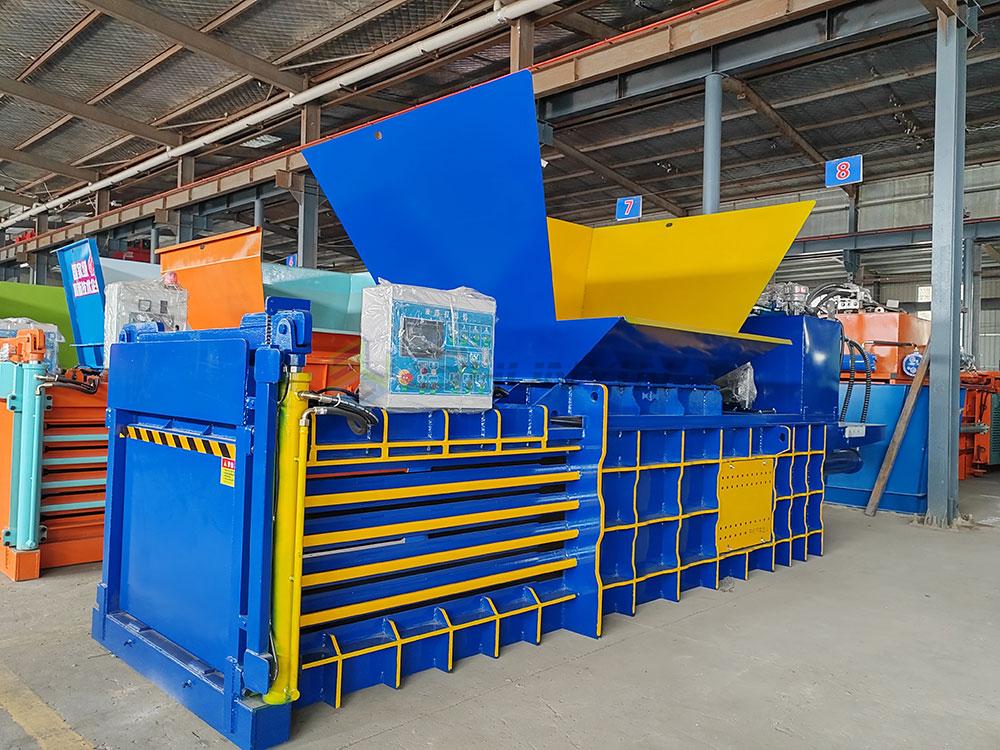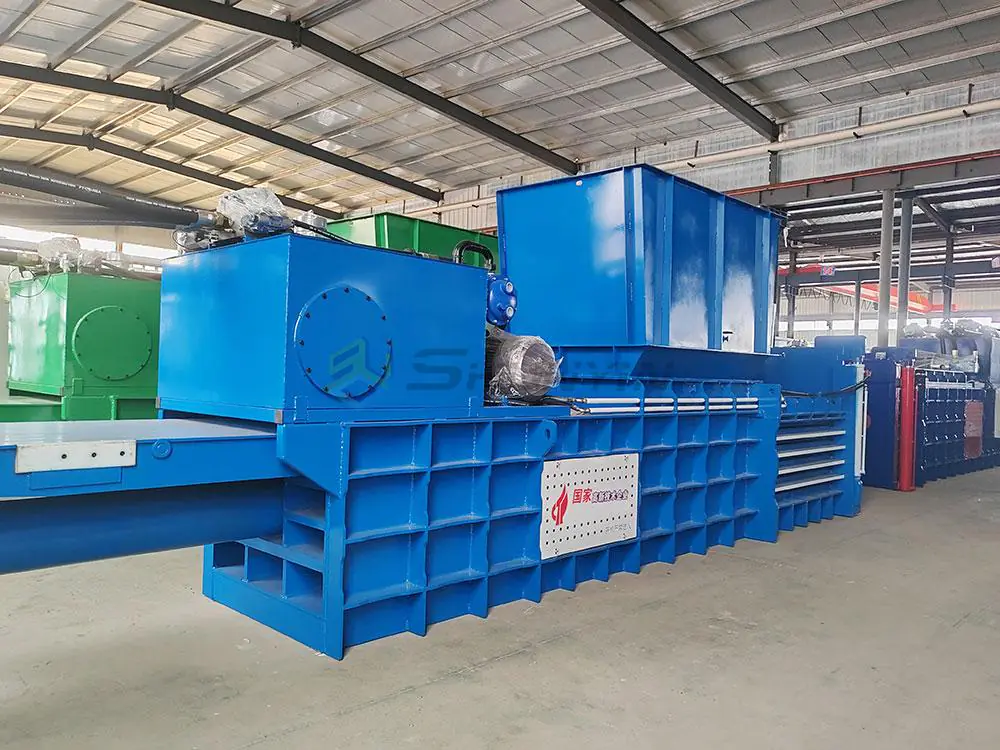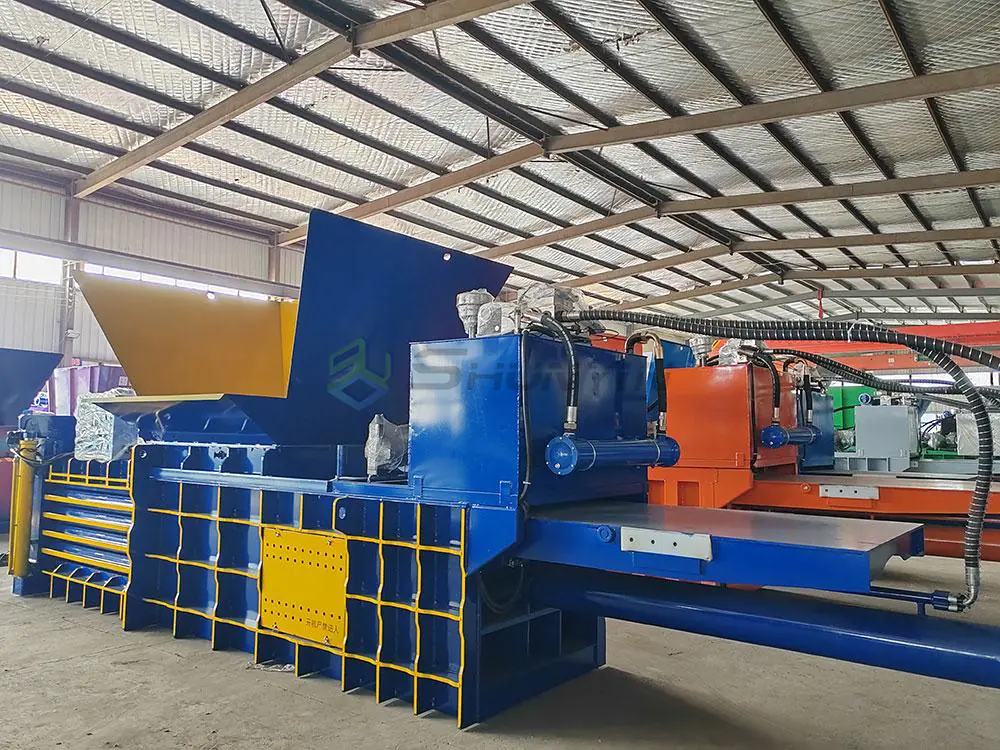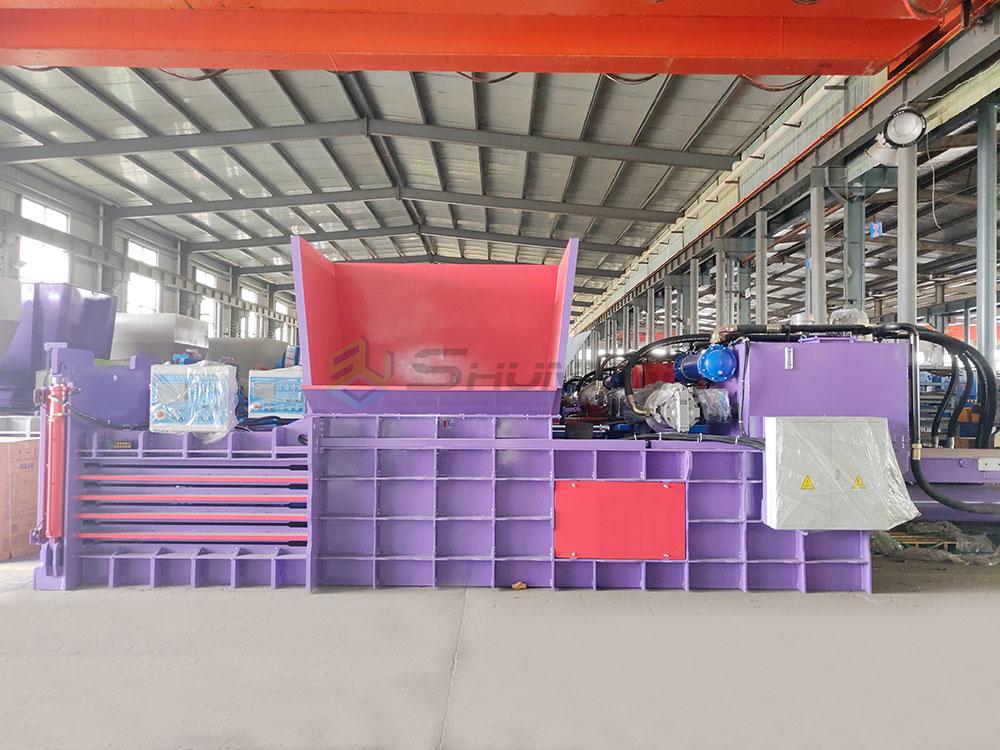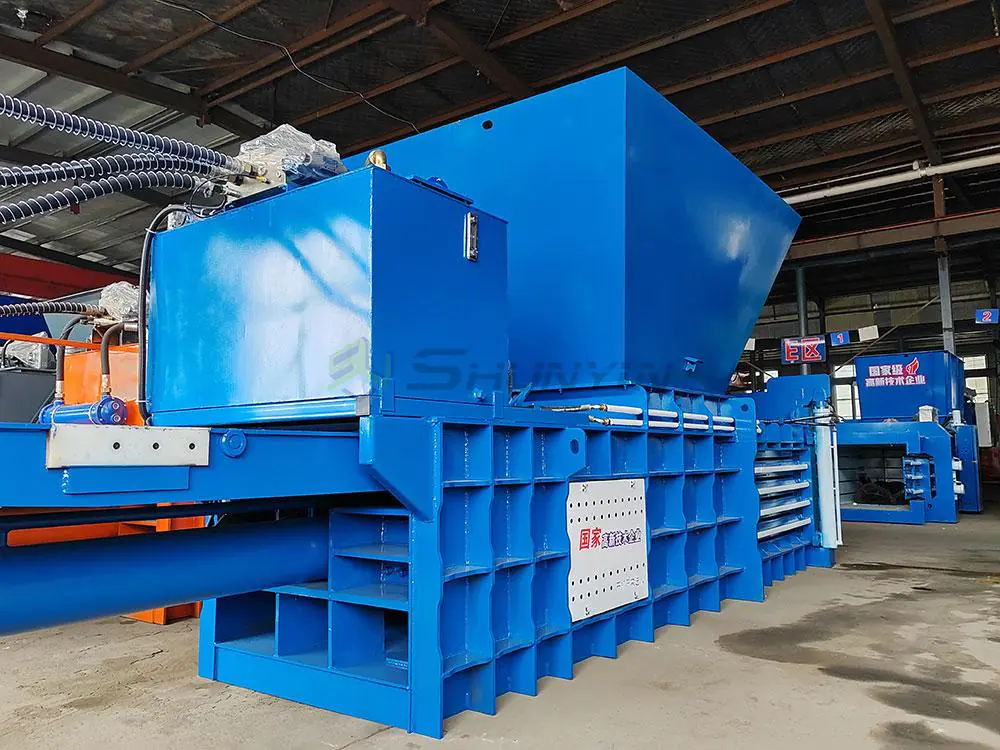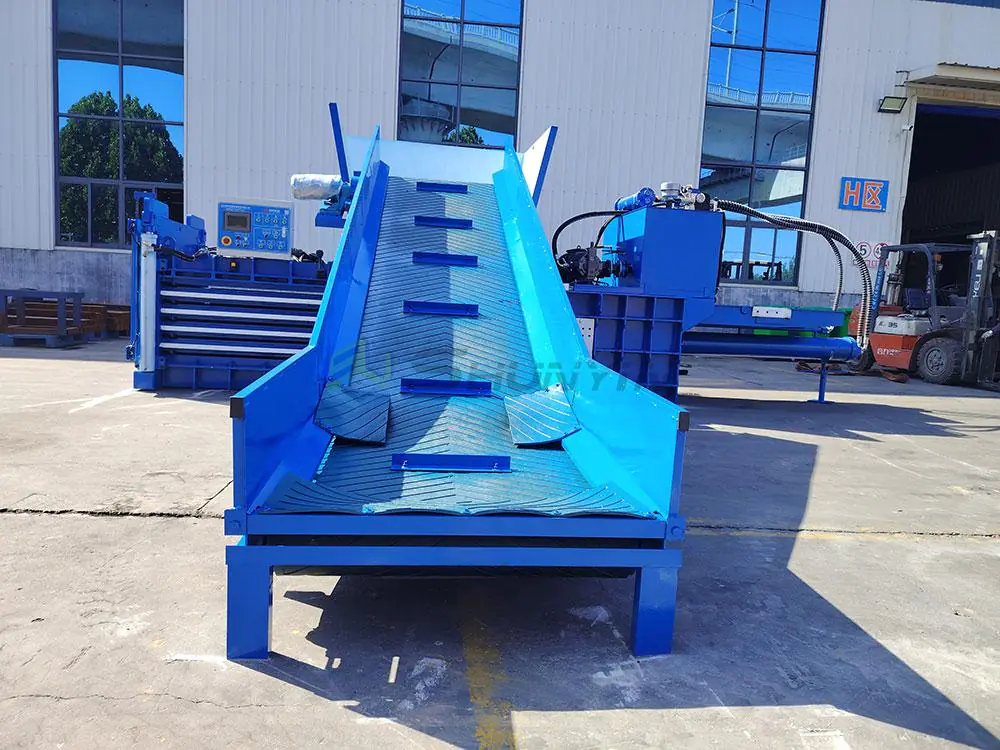Waste piles up quickly, costing space and money. How do businesses keep operations clean and profitable? Horizontal balers1 offer a proven solution. They compress materials efficiently, reducing handling costs immediately.
Horizontal balers compact recyclables into dense bales, cutting volume by up to 90% and lowering disposal fees up to 40%. This speeds up workflows and saves storage space, making waste handling easier and cheaper for any operation.

Now let’s explore how these machines transform everyday waste challenges. Understanding key concepts helps you pick the right equipment. Here’s what every buyer should know.
What is a baler in waste management?
Seeing overloaded skips? Balers solve space issues fast. Materials like plastic or cardboard expand quickly, clogging your site.
A baler compresses recyclable waste into uniform bales using hydraulic pressure. This standardizes handling and transportation while increasing scrap value at recycling centers.

Core functions and benefits
Balers turn loose waste into stackable units with three key advantages:
-
Volume reduction
Loose materials shrink dramatically. A week’s worth of plastic film fits into one bale. -
Improved handling
Forklifts can move bales easily compared to scattered debris. -
Revenue generation
Clean, dense bales fetch better prices from recyclers.
I’ve watched facilities transform overnight. Last month, a Canadian distributor replaced manual sorting with our baler. Their shipping costs dropped 60% immediately.
| Manual Handling | Baler System | |
|---|---|---|
| Labor hours daily | 8 hours | 2 hours |
| Storage space needed | 3 warehouse bays | Half a bay |
| Monthly disposal trips | 12 | 3 |
Practical applications
Different industries need specific setups:
-
Retail
Cardboard from shipments dominates – horizontal balers process boxes efficiently. -
Manufacturing
Plastic scraps require heavy-duty compression to maximize value.
Always inspect material types first when choosing. Hard plastics behave differently than corrugated cardboard. Contact our engineers for a free waste analysis at https://lemonchiffon-shark-638535.hostingersite.com/contact/.
What is efficiency in waste management2?
Frequent disposal trips waste time and fuel. Inefficient systems drain budgets through hidden labor costs.
Efficiency means processing maximum waste with minimal resources – cutting transport frequency, storage footprint, and labor time while maintaining scrap value.

Key efficiency indicators
Focus on three measurements:
-
Volume compression ratio
How many loose cubic meters fit into one bale? Our horizontal models achieve 10:1 ratios. -
Processing speed
Time taken per baling cycle directly impacts productivity. -
Operational costs
Include energy, maintenance, and labor expenses.
One Japanese factory tracked data before/after installation:
| Old System | With Baler | |
|---|---|---|
| Weekly disposal runs | 15 | 4 |
| Staff hours handling waste | 35 | 8 |
| Annual expense | $78,000 | $21,000 |
Why efficiency matters
Margins depend on tight cost control. Slow processing creates bottlenecks in staging areas. Efficient operations also prevent recyclable contamination. Damaged materials lose resale value quickly. For bulk processors, a 5% efficiency gain can mean $20,000 yearly savings.
What is the difference between a baler and a compactor?
Choosing wrong equipment creates new problems. Compacted trash still heads to landfills, while baled materials generate cash.
Balers create recyclable bundles bound with wire or straps; compactors crush mixed refuse into landfill-bound containers. One recovers resources while the other merely reduces trash volume.

Function comparison
Critical distinctions determine applications:
| Feature | Balers | Compactors |
|---|---|---|
| Output | Structured bales | Amorphous blocks |
| Material Handling | Sorted recyclables | Mixed general waste |
| End Destination | Recycling markets | Landfills |
| Revenue Potential | High (scrap sales) | None |
Real impact on operations
At an Arizona distribution center, replacing a compactor with a baler transformed outcomes. Paper shipments decreased from 3 weekly hauls to one. Their waste bills actually became income streams.
When to choose each
-
Use balers for:
Cardboard · Plastic · Foam · Textiles
(Any recyclable with market value) -
Use compactors for:
Mixed garbage · Food waste · Non-recyclable packaging
Match equipment to material streams. Horizontal balers1 excel for consistent recyclable volumes. Need help deciding? Our specialists provide free consultations.
What is a horizontal baler?
Vertical alternatives can’t handle high volumes smoothly. The horizontal design optimizes continuous industrial workflows through automated feeding.
Horizontal balers compress materials along their lengthwise axis using hydraulic rams. This allows continuous loading, making them perfect for facilities with constant cardboard or plastic outputs.

Key components and advantages
Three elements enable superior performance:
-
Feeding conveyor
Workers constantly load materials without stopping the machine. -
Horizontal compression chamber
Hydraulic rams generate up to 120 tons of force on the 1600HD models. -
Automatic tying system
Pre-set bale size triggers wire/strapping mechanisms.
The continuous operation delivers up to 8x more output daily than vertical units. Maintenance proves simpler too—major components face forward for easy access during repairs.
Industry applications
Major sectors where horizontal models excel:
-
E-commerce fulfillment centers
Process endless cardboard mountains with automated feed systems -
Plastic recyclers
Bale film and rigid materials for export-grade bundles
Our Canadian buyer Lambert shared results. After switching to our horizontal baler, his rebranded machines sold better. The consistent bale size pleased big waste processors. For your operation, request specs via https://lemonchiffon-shark-638535.hostingersite.com/contact/.
Conclusion
Horizontal balers1 transform waste management drastically. They slash space needs, cut costs, and convert trash into revenue – essential tools any facility needs.


